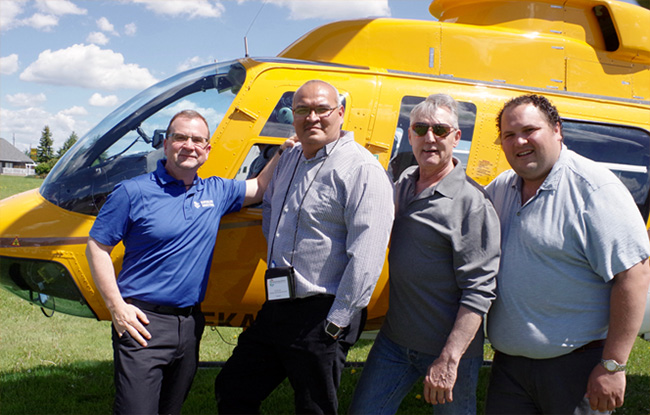Training, employment and community readiness discussed at Regional Energy Conference

By Rick Garrick
THUNDER BAY – Discussions on the politics of transmission and on training, employment and community readiness were featured at the Regional Energy Conference on June 13-14 in Thunder Bay. The conference was hosted by Supercom Industries, Wataynikaneyap Power and Greenstone Transmission Project at the Best Western Nor’Wester Hotel and Conference Centre.
“This whole conference is really going to be telling a story,” says Red Rock Indian Band Chief Matthew Dupuis, president of Supercom Industries. “It’s starting right now with telling a story of how the companies came together — the First Nations formed a partnership and they partnered with industry. The next story is going to be more on the regulatory with the IESO (Independent Electricity System Operator) and how projects go from talking about it to an actual project to being completed. Then we are going to be talking about how First Nation members and residents across the region are going to benefit from the employment. And then we are talking about business development — the story just goes on and on.”
SuperCom Industries is a 100 per cent First Nation-owned business created by Fort William, Red Rock Indian Band, Pays Plat, Biigtigong Nishnaabeg, Pic Mobert and Michipicoten to maximize economic and employment opportunities with the East-West Tie transmission line between Wawa and Thunder Bay. Wataynikaneyap Power is a partnership between 22 First Nations and Fortis Inc. and Greenstone Transmission is driven by eight First Nations in the Greenstone region.
“Northern Ontario, and especially northwestern Ontario, is going to be a hotspot for development for years to come,” Dupuis says. “You’ve got a countless number of projects, whether it is in mining, whether it is in road construction, whether it is in transmission and the fact of the matter is we don’t have a large enough skilled workforce to go after all these jobs. So it is great to see now all of our young people taking the initiative to get ahead of it.”
Fort William Chief Peter Collins participated in the Negotiating with Transmission Proponents session to kick off the conference.
“(It is important to) look at the opportunities in the industry and possible partnerships that could be created through the energy initiatives that are going on in our territories,” Collins says. “Understanding all the industry and all the different levels of partnerships that can be created through energy projects, hopefully a lot of our communities take advantage of the job opportunities and the opportunities that go with it.”
Norm Jaehrling, CEO with Pic Mobert and director with Supercom Industries, participated in the third session of the conference: Working with Your Neighbours.
“We are hearing already the theme of how important it is for communities to be together as one voice in negotiating our positions in these projects and then executing on those opportunities,” Jaehrling says. “It’s better that we work together than as individual communities.”
Jaehrling says Supercom Industries currently has more than 240 people in active training programs for the East-West Tie transmission line.
“So there is a lot of buzz, a lot of interest and a high level of participation in the training programs that are preparing people for jobs,” Jaehrling says. “It’s not just about cooks and cleaners, even though those are important jobs. There’s engineers and linesmen and tradespeople, there’s human resources people, financial people. These projects have a huge need in a variety of disciplines.”
The conference also included sessions on Ontario’s Energy Landscape, Addressing Barriers to Employment, Community Engagement, Training Members for Employment, Business Readiness and First Nation/Industry Partnership Development as well as a trade show.


